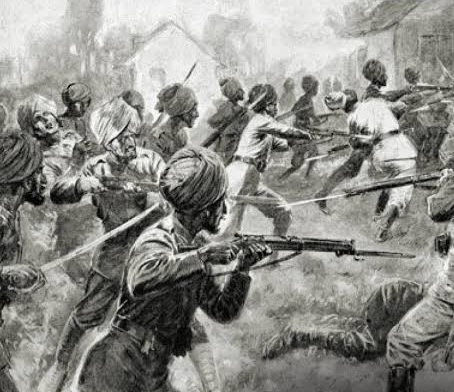The Unsung Backbone of India’s Freedom: The Sikh Contribution to Independence
- SikhsForIndia

- Aug 10
- 3 min read

When India celebrates its Independence Day, our tricolour waves proudly for the sacrifices of countless freedom fighters. Yet, within that vast story of courage, the Sikh community’s contribution is so disproportionately immense that it demands special recognition. The community, whose courage, sacrifice, and relentless spirit became one of the fiercest forces driving India’s liberation.
The history of colonial India is a history of exploitation. The British dismantled industries, bled resources, and broke the nation with famines, massacres, and ruthless political suppression. With its cannons and laws, the British empire thought it could break the will of people that had endured centuries of invasion. Yet, from the mustard fields of Punjab rose a community whose blood became the ink of our nation’s freedom. The Sikhs forming less than two percent of India’s population at the time, bore a burden so great that history still struggles to measure it.
The gallows at Lahore Central Jail still whisper the name Bhagat Singh. Barely twenty-three, his defiance was as fierce as his moustache was proud. He knew the hangman’s noose awaited, yet when they came for him, he smiled, humming revolutionary songs. They didn’t just execute a man; they tried to silence an idea and failed. And he was not alone. Kartar Singh Sarabha, hanged at 19, became the youngest martyr of the Ghadar Movement, inspiring soldiers and farmers alike to rise against the empire.
From the fields of Punjab to the gallows of British prisons, Sikhs wrote their resistance in their own blood.
Udham Singh carried the pain of the 1919 Jallianwala Bagh massacre across decades, until he traveled halfway across the world to London and put a bullet in Michael O’Dwyer, the man responsible for the slaughter. He did not flee. He stood in court and declared his act one of justice for the thousands of innocents gunned down without mercy.
While Sikhs have always been a numerical minority, around 2% of India’s population during the freedom struggle, their sacrifices tower in proportion. Over 80% of those exiled to the infamous Kaala Paani (Cellular Jail in the Andamans) were Sikhs. Among the 121 Indian revolutionaries executed by the British, more than 75% were Sikhs. In the Ghadar Movement, which sought to incite mutiny among Indian soldiers of the British army, over 90% of its members were Sikhs, many of whom were executed or died in prison. In Subhas Chandra Bose’s Indian National Army, Sikhs formed a substantial portion of the fighting ranks. Many deserted the British Army to join Bose’s cause, risking execution if caught. In 1914, when many ships brought revolutionaries back to India, it was Sikhs who walked straight into British prisons rather than betray their comrades. During the Quit India movement, Punjab’s jails overflowed with turbaned prisoners whose only crime was refusing to bow.
From the very outset, Sikhs played a frontline role in organised resistance against the British. Baba Ram Singh and the Namdhari Movement challenged colonial authority as early as the 1850s. In the horrific dungeons of the Andaman Cellular Jail, in the blood-soaked sands of the gallows, in the exile camps of Burma, Sikh names filled the registers. The British feared their courage so much that they targeted them with disproportionate arrests, confiscations of land, and executions.
For Sikhs, the fight against the British was not just about independence; it was about justice, dignity, and the right to live without oppression. The British not only exploited India economically but targeted Punjab specifically with heavy taxation, land seizures, and political suppression. Sikh farmers, already carrying the scars of post-Maharaja Ranjit Singh annexation, bore the brunt of colonial greed.
Freedom came on 15th August 1947, but it came soaked in sacrifice. The Sikhs had lost homes, land, and countless lives during Partition. Yet they rebuilt, not just for themselves, but for the nation. They became the backbone of India’s agriculture, feeding a country that had been starved under colonial rule. They stood guard at the borders, their regiments carrying forward the same fearless spirit that had defied the British Raj.
The British Empire may have believed it could crush the spirit of India with chains, prisons, and hangman’s nooses. But the Sikh community proved, again and again, that a soul willing to die for freedom is a soul that can never be enslaved.



Comments